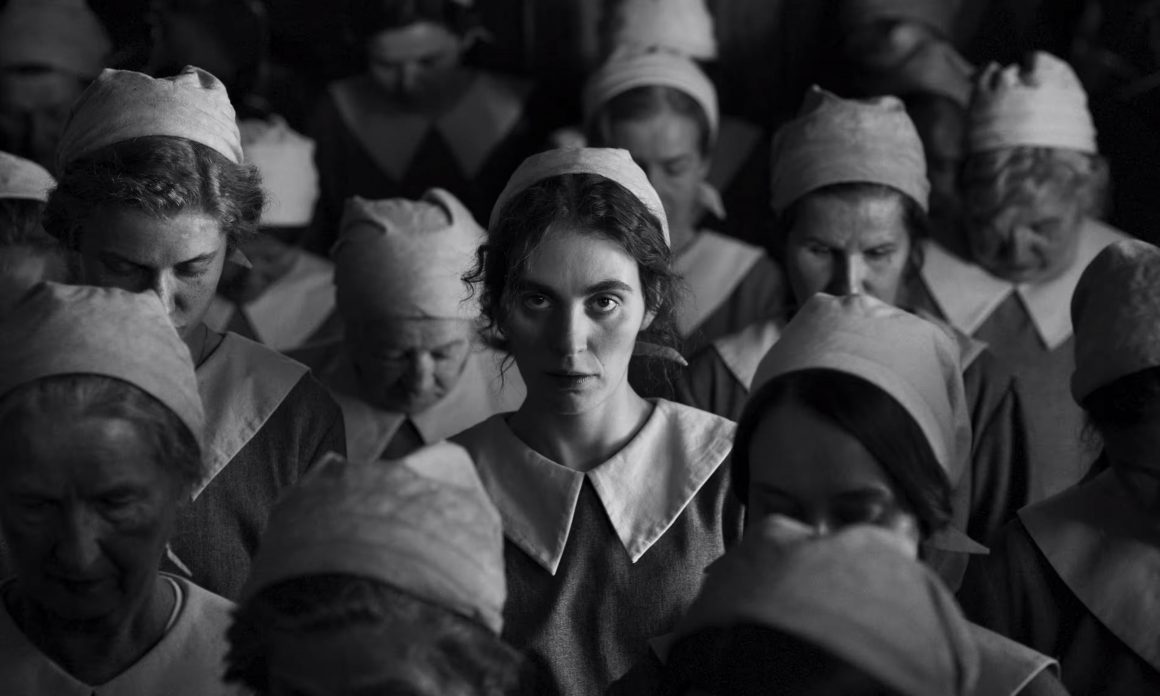
CIFF 2024’s Most ‘Toxic’ Films
By Ilana van der Merwe, October 3 2024—
Calgary International Film Festival (CIFF) hosts a space for film creators and enthusiasts to come together yearly and celebrate some of the most influential, accredited and unique films of the year.
A common theme found in this year’s films is the presence of toxic environments heavily impeding the choices characters make. Arguably, the introduction of exterior pressure to lead character’s into certain circumstances is a key element of plot development, but in these three films featured in this year’s CIFF line up, the environments they were presented with lead them astray at every turn.
The Girl With the Needle directed by Magnus von Horn is set in the weeks after the conclusion of World War 1 in Copenhagen. Following Karoline Nielsen, a uniform manufacturer laborer, viewers instantly understand how dire her situation is. Being sent away by her baby’s father, losing her job to prevent slander on her company’s name and continually struggling to make rent, Karoline must make demanding decisions for her and her baby’s well being.
In this film, the toxic environment impeding our protagonist decision is that introduced by the sexism built into the societal views of pregnant women as well as the stigmatization around impoverished and single mothers, and premarital sex. Had it not been for her employer’s view on the dependability of female workers, Karolina may have been better compensated for being laid off. Without the normalized stigmatization against unmarried mothers, perhaps the lay off by itself would have been considered unjust.
Aside from policies and norms, the discrimination felt by Karoline as she came to full term could have been avoided. This society has been highly influenced by the depicted toxicity, affecting what is seen as a crime, and what is not. This presented a situation where access to abortions, well fair, and legal representation is highly inaccessible. Therefore, Karoline finds herself in a toxic environment limiting the frame of her decision making. With that said, the portrayal of the common experience of women in this time and place was highly accurate historically in the film.
The Code poses a more modern interpretation of what a toxic environment might look like. Created by Eugene Kotlyarenko, The Code addresses themes of suspicion, loyalty, intimacy and authenticity. In March 2021, the COVID pandemic is at its height as a couple — Celine and Jay — are working on Celine’s idea to film a documentary. Isolating in a rented house near Joshua State Park, the couple film everything as they go about everyday tasks and gather footage for their future film.
The ‘toxicity’ in this film is found in the foreground and background of the documentary that Celine is producing. First, focusing primarily on the pandemic, the couple is forced to navigate the familiar circumstances associated with COVID: isolation, limited social interaction, and use of masks. Using this physically toxic circumstance to harbor an emotionally exploitative relationship with their interviewees is just the start of Celine and Jay’s demise.
On the other hand, as the documentary takes form, the audience realizes what Kotlyarenko is trying to capture is how the pressure of outside influences can weigh down on a relationship. From individual history, to reminders of the past, as well as the impact of social media and cell phones on partners, Kotlyarenko condenses stereotypical modern relationship’s issues to one house on a tight and fully documented timeline. The Code does an excellent job at depicting how a toxic environment introduced through the controlled and uncontrolled situations around you can lead you to make poor and selfish choices.
Toxic directed by Saulė Bliuvaitė addresses the toxic environment found in a small impoverished unnamed industrial town. The film follows Marija and Kristina, young girls who are tired of their bleak lives. Marija — a pretty girl at 170cm —- has recently moved into town with her grandmother, and is constantly taunted for her limp. Kristina — a fair girl with blonde hair and a love for heels — lives with her loving father. Kristina introduces Marija to her way of life: using older boys for alcohol and drugs, spending days at a secluded roadside lake, and working to find a way out through the local modeling school.
Thanks to its title, there is no doubt that the environment these young girls find themselves in place them at risk for bad decision making. The first layer of toxicity influencing the girls behavior is the lack of financial support in the world around them. They themselves have little to no supervision as their caregivers must work in and out constantly to make a living. If even the support groups around these girls are struggling to make ends meet, how can viewers judge them for doing what has been normalized to get by?
The secondary layer of toxicity has become a topic of conversation in the media over the last few years. Heightened in the walls of the modeling agency, Kristina and Marija are indoctrinated into toxic body standards and unsafe ways to achieve them. If your height is not the problem, then your weight is. If your side profile is not perfect, you pray that your waist is slim enough. This toxic environment of constant scrutiny, judgment and performance based praise lead the young girls’ capability to rationalize their choices to be replaced by their desperation for success.
It is important for cinema to reflect the environments individuals deal with. By emphasizing the struggles of historic or present toxic standards, stereotypes and stigmas, film is capable of bringing awareness to these issues.
For more information about CIFF and the organization’s upcoming project, check out their website.
If you feel you are dealing with any of the ‘toxic traits’ of the stories listed above, help can be provided through Calgary based Councilors, financial aid or mental health aid through Alberta Health Services or domestic violence support through the government of Canada.
